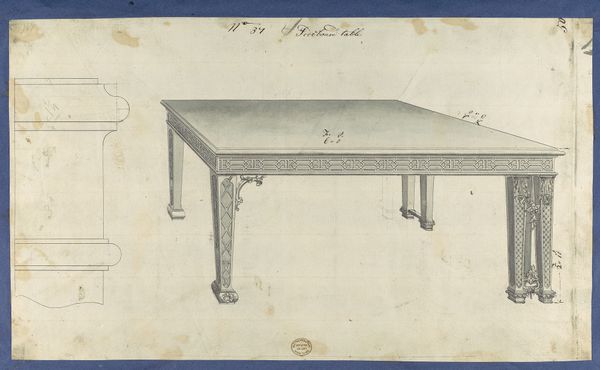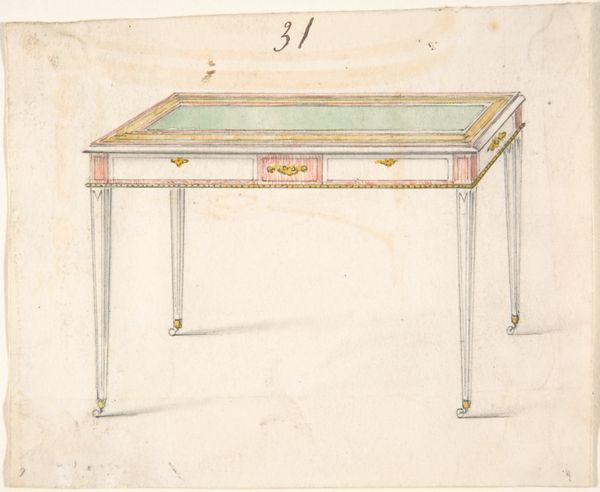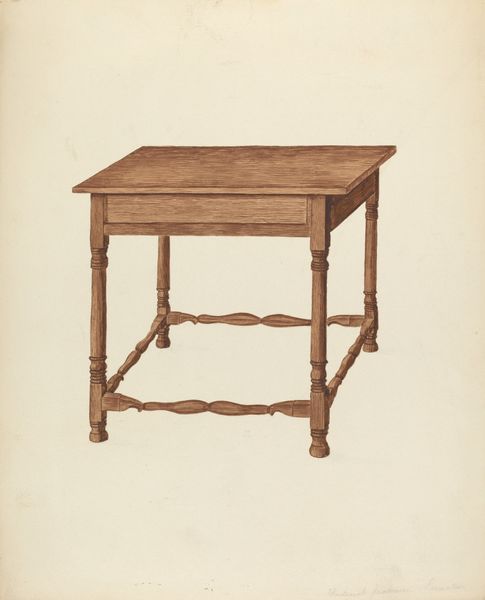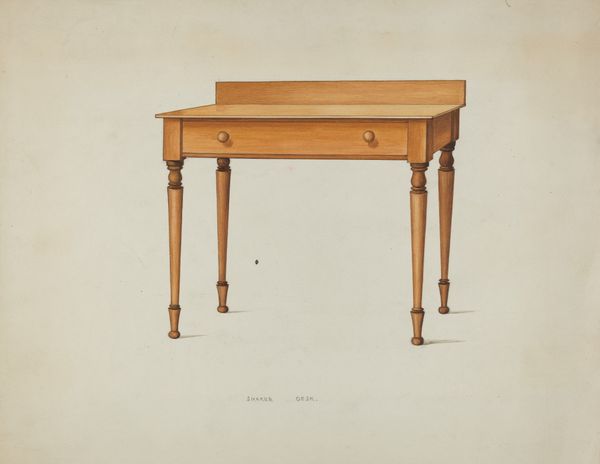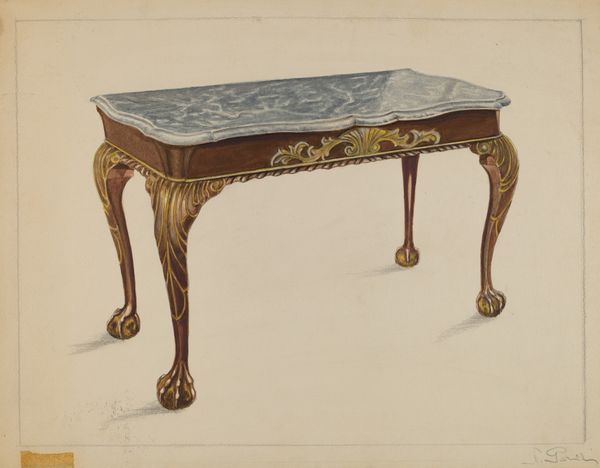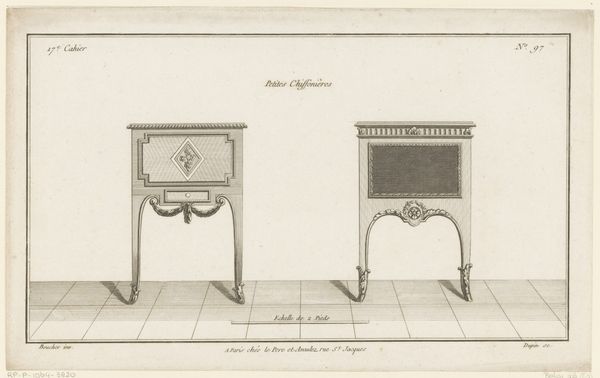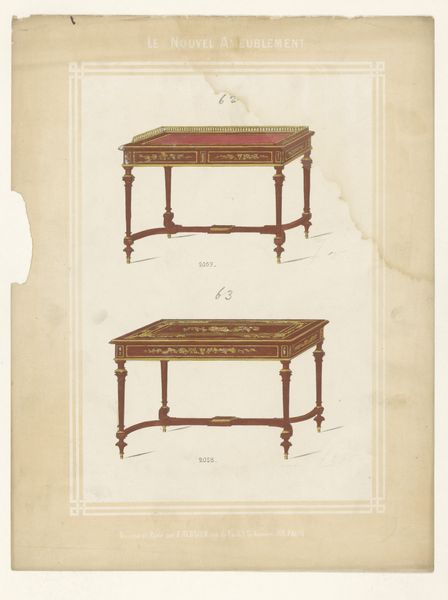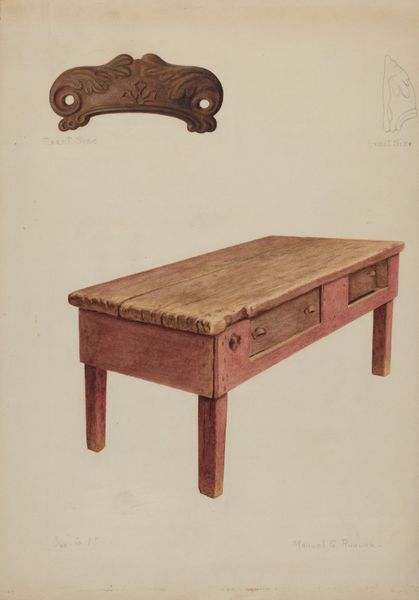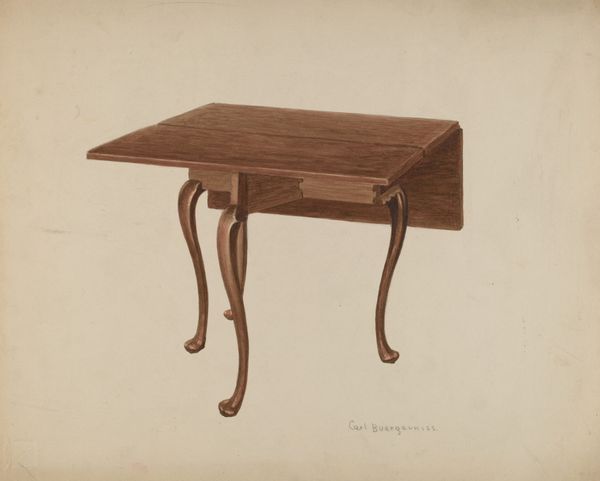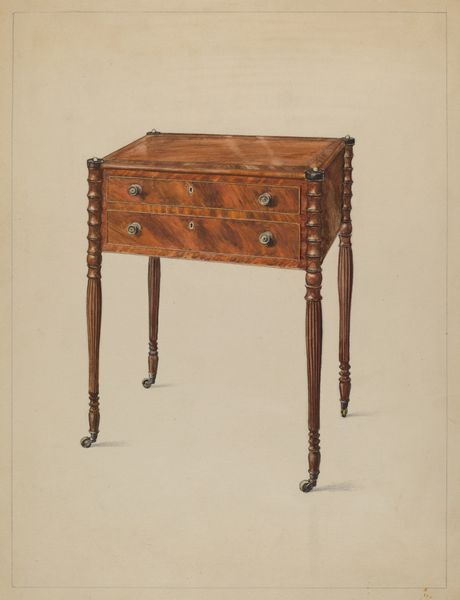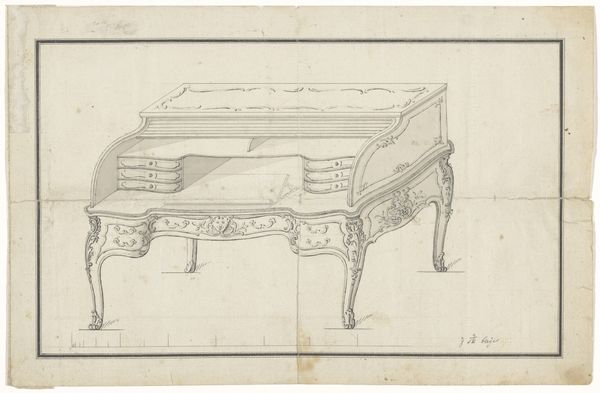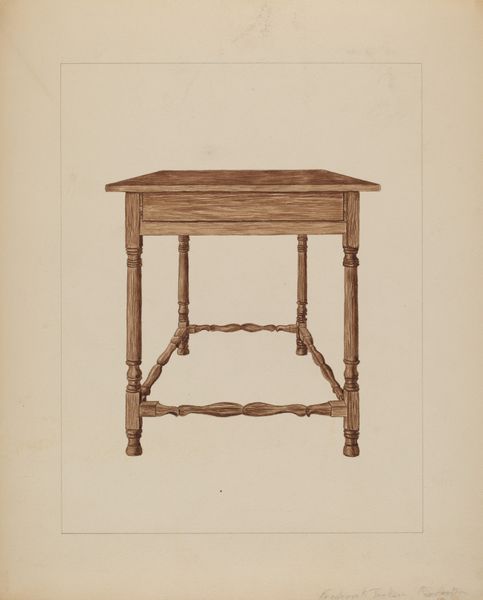
The Cabinet Dictionary, containing An Explanation of all the Terms used in the Cabinet, Chair and Upholstery Branches 1803
0:00
0:00
drawing, print, paper, pen, engraving
#
drawing
#
neoclacissism
# print
#
book
#
furniture
#
paper
#
line
#
pen
#
decorative-art
#
engraving
#
realism
Dimensions: 8 11/16 x 5 1/2 x 1 11/16 in. (22 x 14 x 4.3 cm)
Copyright: Public Domain
Curator: What strikes me immediately about this engraving is its stark elegance. The shadows cast by the desk's legs on the creamy paper give the piece an ethereal quality. Editor: It is rather skeletal, isn’t it? The bare-bones representation speaks volumes about the culture of design in 1803. We're looking at an image extracted from “The Cabinet Dictionary,” created by Thomas Sheraton. It's currently housed at the Metropolitan Museum of Art. Curator: Sheraton was a significant figure! More than just a craftsman, he provided accessible keys to the styles that shaped an era. One could consider him a sort of pattern book impresario. It's neoclassicism in furniture, translated for the aspirational classes. Editor: Indeed, this print reflects more than aesthetic preferences; it's indicative of labor practices, access to materials, and the whole chain of production behind furniture-making. You have to admire his linework; even though it is spare, you can feel the potential of the wood. Curator: And observe the decorative flourishes along the legs and upper portion! They hint at the values projected onto furniture itself, symbols of learning, order, and social ambition rendered into material form. Furniture as ideological artifact, I suppose. Editor: Precisely. While Sheraton provides the ideal blueprint, it leaves open how craftspeople translate this drawing into reality: how much agency do they have in adapting these precise instructions using the specific materials in hand? Each finished piece then becomes a collaboration across class lines. Curator: So the symbolism continues even in its later construction! A confluence of aesthetic, manual, and social aspirations expressed through form. Editor: Thinking about the print’s original purpose makes it far more compelling: it isn’t a precious object so much as an element of exchange in a material network, with ramifications in the labor and design processes, still valuable to explore today. Curator: Right. It's less about perfect execution and more about democratizing design through the sharing of visual and material concepts. Editor: A testament to the tangible connections inherent in what we now might take for granted. Curator: A cultural artifact, if ever there was one!
Comments
No comments
Be the first to comment and join the conversation on the ultimate creative platform.
